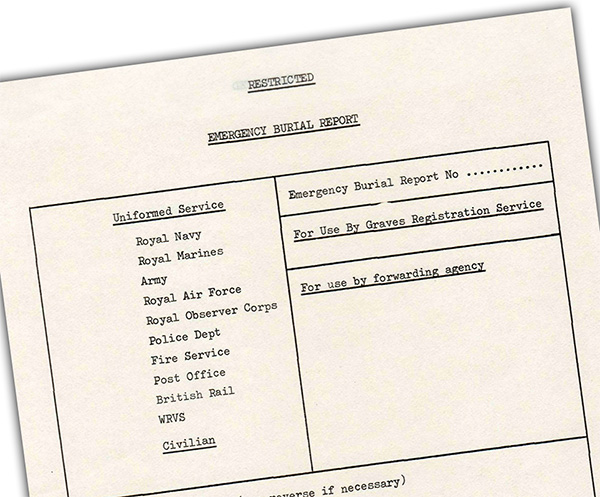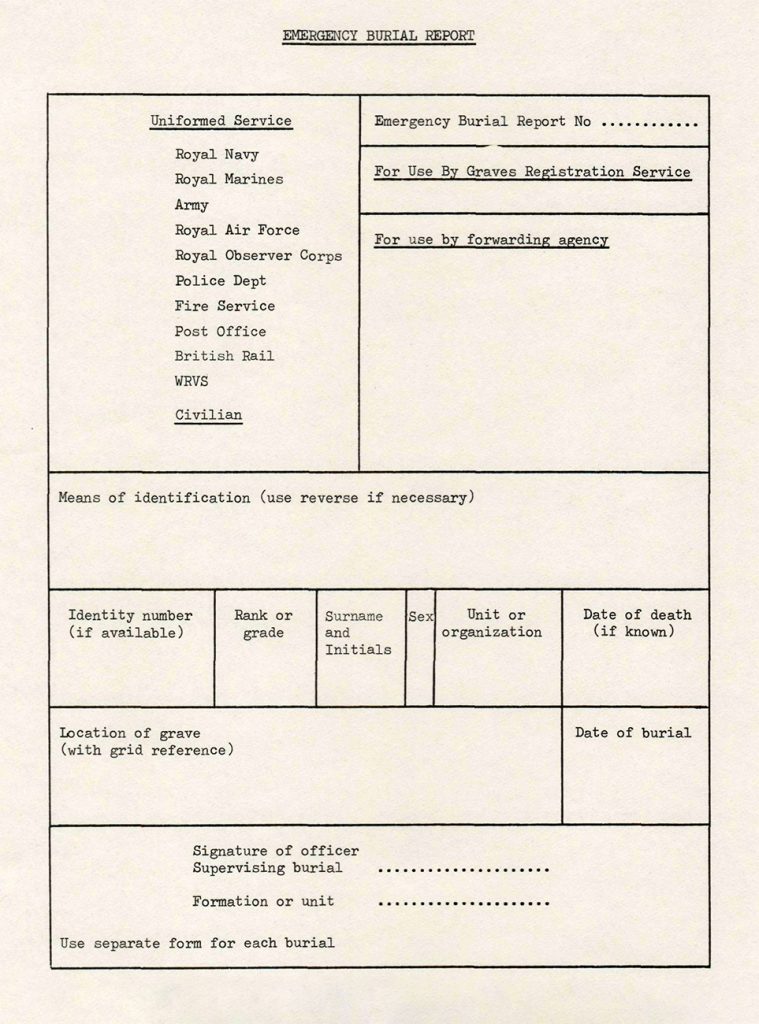In August 1979, the Ministry of Defence published the “Joint Service Manual of Home Defence”. This document, classified as Restricted, provided instructions to the UK armed forces on the defence of the UK in the event of a war, with a strong focus on nuclear attack.
“It may seem pedantic in the aftermath of a nuclear attack to require that deaths and burials are recorded…”
Part of the military aid it was envisaged they would provide to the civil authorities was assisting with the burial of the dead. The manual insists scrupulous records should be kept, and even provides a form to complete for each corpse.
“Though it may seem pedantic in the aftermath of a nuclear attack to require that deaths and burials are recorded, such records eventually will be of great value to the local authorities’ tracing service and to the relatives concerned. Armed Forces headquarters are to maintain burial records of military and civilian dead buried by them.”
The dead were to be treated with respect, and – curiously – the guidance was to bury them with a view to recovering the bodies later:
“Emergency burials are to be carried out so as to conform with accepted principles of hygiene, to obtain the maximum safety from marauding animals and looting and to provide the maximum chance of subsequent recovery of the remains. Whenever practicable a brief burial service of the appropriate religion should be held.
“When casualties are heavy, it may be necessary to bury several individuals in a common grave, usually a straight trench. To facilitate recovery, it is desirable that the remains be placed shoulder to shoulder.”
The only acknowledgement that burying bodies after a nuclear strike might pose some practical issues comes later:
“Disposal of the dead is likely to be possible only when radiation has decayed to a level consistent with spending prolonged periods in the open. If disposal is essential in less favourable radiological conditions, then individuals must be protected against radioactive dust, and the time spent out of the fallout shelter be limited to a safe duration.”
You can find out more about plans for dealing with the dead after nuclear attack in my article for the Wellcome Collection.
Looking for more?
My book, Nuclear War in the UK (Four Corners Books, 2019) is packed with images of British public information campaigns, restricted documents, propaganda and protest spanning the length of the Cold War.
It also tells the story of how successive UK governments tried to explain the threat of nuclear attack to the public. It costs just £10 – find out more here.
Don’t forget you can also follow me on Twitter – @coldwaruk – to get extra bits and pieces, as well as being the first to know when I post something new here on the blog.



